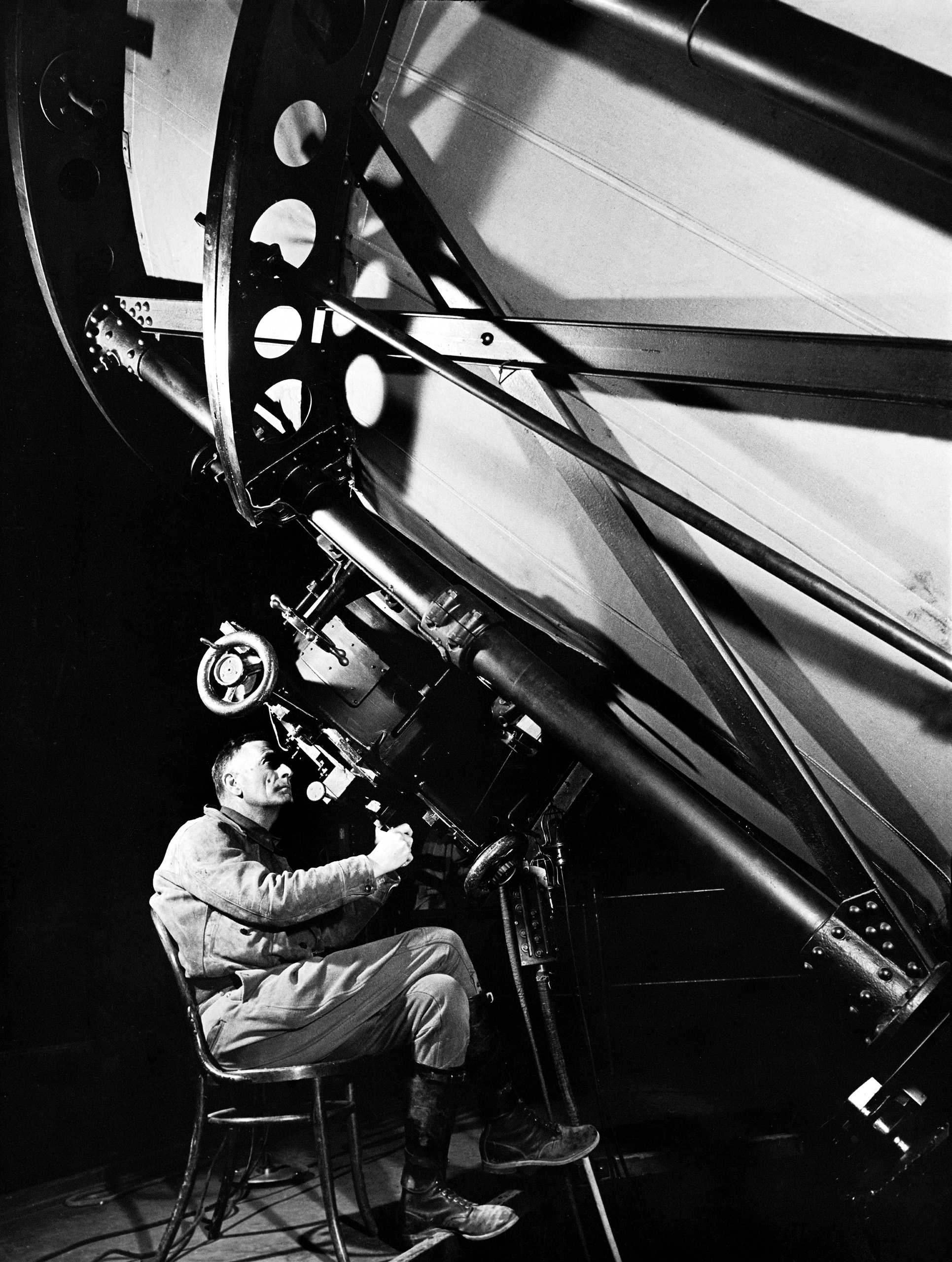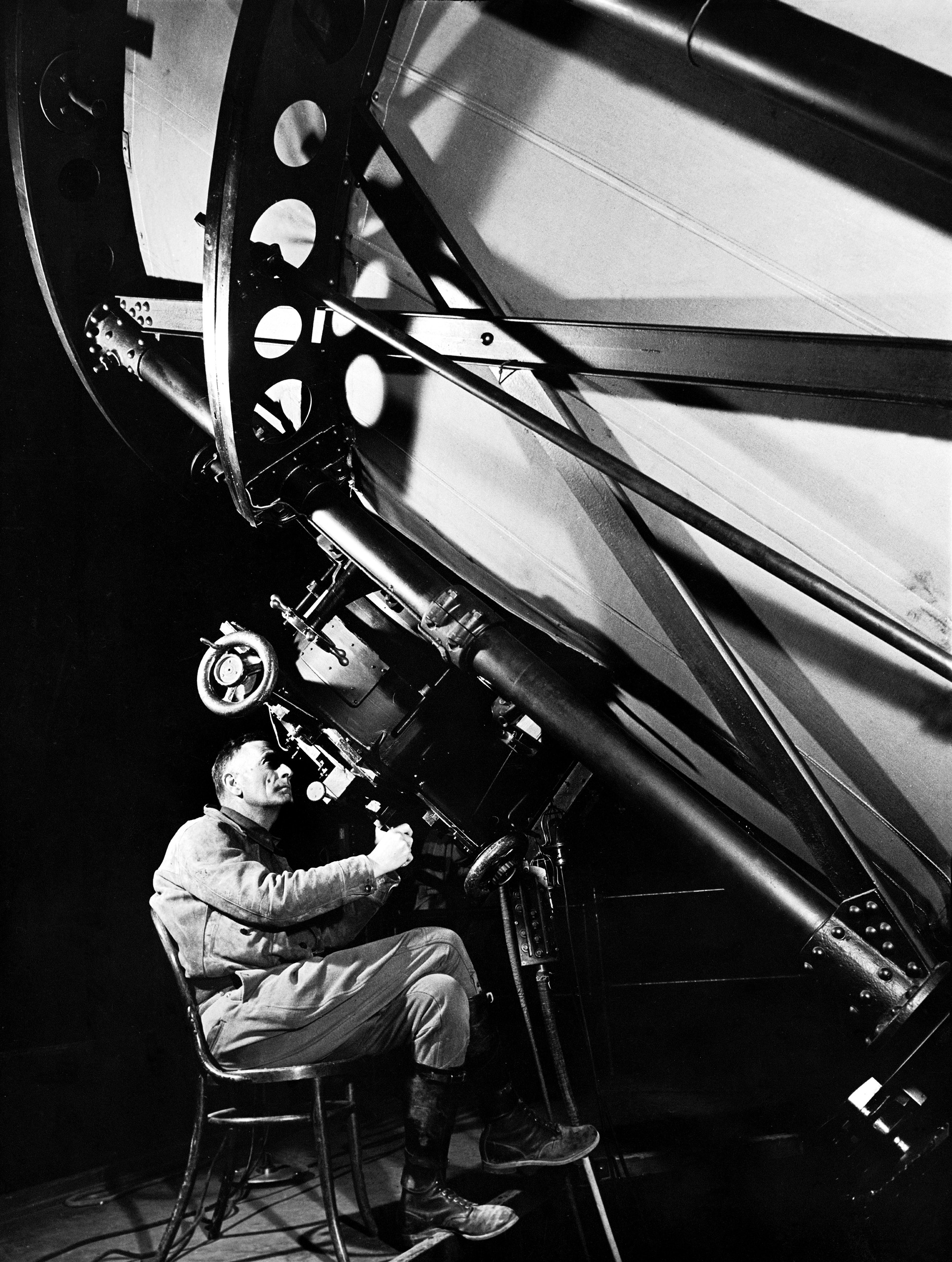
Today he is remembered mainly because of a modern marvel, the Hubble Space Telescope, that bears his name. But in the first quarter of the 20th century, the handsome, self-mythologizing and brilliant astronomer Edwin Powell Hubble was famous for what he discovered while peering through an earlier, land-based telescope: namely, that we are not alone. Or rather, that our galaxy is not alone. In fact, ours is one of literally billions of galaxies — an exhilarating and humbling reality that had long been debated but, until Hubble, was never decisively shown.
Like Einstein’s theory of relativity (the validity of which Hubble’s discovery helped bolster), Edwin Hubble’s astonishing revelation — officially delivered as a paper at the Jan. 1, 1925, meeting of the American Astronomical Society — fundamentally altered the way we see the universe, and our place in it. Some people reacted to Hubble’s research with dismay, feeling that such a finding reduced centuries of human striving to near-irrelevancy.
After all, in the face of a cosmos as vast and mutable as that described by Hubble, even the highest aspirations and accomplishments seem somehow pointless. Vain. Puny.
Others, meanwhile, celebrated the ramifications of Hubble’s work and his genius: if a man — albeit one firmly standing on the shoulders of the giants who came before — could envision and then, though rigorous work and discipline, prove that our universe is comprised of not only billions of stars but billions of galaxies, then what sort of other discoveries might lie in wait?
If a single human mind could encompass such a radical view of the cosmos, what other marvels could the human mind and the human imagination achieve?
Here, on Hubble’s 125th birthday (b. Nov. 20, 1889), LIFE.com considers his legacy as seen through the lens of a photograph made in 1937 by Margaret Bourke-White. In the picture — arguably the single greatest photo ever made of a scientist at work — Hubble sits at the controls of the 100-inch Hooker telescope in California, the very same mind-bendingly powerful (and beautiful) device through which he gazed for years on end before shocking the world with his pronouncement of January 1925.
As LIFE wrote in the Nov. 8, 1937 issue of the magazine, in which Bourke-White’s picture first appeared:
On top of Mt. Wilson, 70 miles east of Los Angeles, works a group of patient men who think in terms of decades and whose calculations are made in terms of millions of light years. They are the astronomers in charge of the 100-inch telescope which in the last 20 years has gradually rolled back the frontiers of the universe. Night after night and for hours on end they sit . . . taking photographs of distant stars. To them, the earth is an infinitely small cog in an immense clock. Hence they live in an atmosphere pleasantly devoid of the petty realities of life.
Whether or not any scientist, no matter how accomplished, has ever truly been able to “live in an atmosphere pleasantly devoid of the petty realities of life” is obviously open for debate. But in Bourke-White’s remarkable portrait of Hubble, we witness a man so at ease and in sync with the massive machine before him that he seems almost to be a part of it — or rather, it is part of him: an extension not of his corporeal body, but of his imagination, and his will.
Alone, riveted, tirelessly tracking and mapping the heavens, Hubble is in his element. The “petty realities” fade; the universe expands; human knowledge advances.
That a single picture made more than three-quarters of a century ago can capture all of that, in an instant, says as much about the heart-stopping adventures of our greatest scientists as it does about both the talent of our greatest photographers, and the deep, enduring appeal of photography itself.
[MORE: ‘The Best of LIFE: 37 Years in Pictures’]

More Must-Reads from TIME
- Why Trump’s Message Worked on Latino Men
- What Trump’s Win Could Mean for Housing
- The 100 Must-Read Books of 2024
- Sleep Doctors Share the 1 Tip That’s Changed Their Lives
- Column: Let’s Bring Back Romance
- What It’s Like to Have Long COVID As a Kid
- FX’s Say Nothing Is the Must-Watch Political Thriller of 2024
- Merle Bombardieri Is Helping People Make the Baby Decision
Contact us at letters@time.com